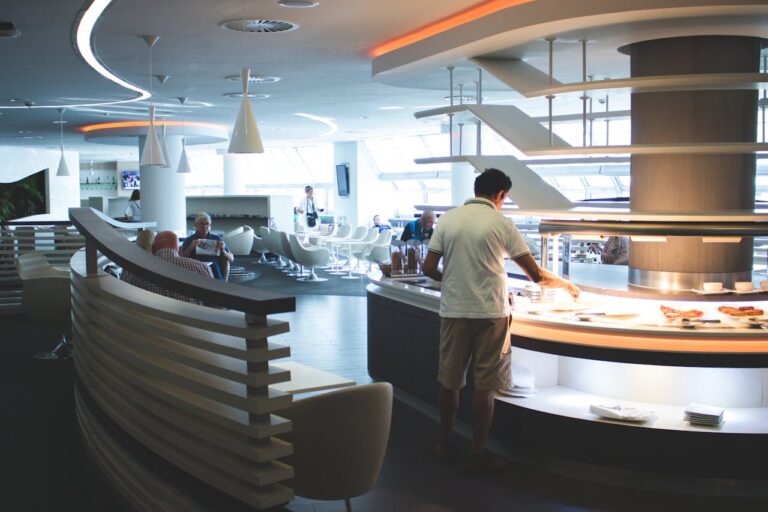As a Wall Street Journal headline stated in September, “At the airport, there’s a fancy new lounge everywhere you look.” The author is not wrong. Existing airport lounges have undergone significant upgrades in recent years, and any available airport space across the country is quickly being snatched up by airlines and financial institutions to create more over-the-top, exclusive luxury lounges.
Today, let’s talk about the luxury lounge trend, why businesses are leaning into it, and who is really paying for those lounges at the end of the day.
Increasing loyalty
Exclusive lounges are intended to drive customer loyalty, and according to the companies, it’s working. A senior VP at Delta Airlines told the WSJ that “lounge access is the No. 1 reason that people will acquire our co-brand,” referring to the Delta SkyMiles Reserve American Express card.
Credit companies, in particular, are pushing forward with a focus on lounges to hook customers around a sense of identity rather than solely their product or service options. As a behavioral scientist told the BBC, “The credit card firms are not just building rooms at airports, they’re building a sense of self…Yeah, it is a piece of plastic with the chip in it that holds your money, but it is something that actually gives you a position in society.”
Capital One just opened its largest lounge at New York’s JFK Airport this summer. JFK’s Terminal 4 now has over 135,000 square feet of lounge space, half of which was added in the last three years. Delta has two lounges in the terminal, one with “a private security lane, a terrace with a retractable roof overlooking the tarmac, aromatherapy treatments and a brasserie serving three-course meals.”
Some other luxury additions to various lounges include showers, full-service bars, facials, arcade games, and espresso stations – all seemingly free of charge for cardholders.
Who pays?
Airlines have found partnering with credit card companies very lucrative. According to the WSJ, “Delta made more than $7 billion from Amex last year and says it’s on track to bring in $8 billion this year.” Lounges are a big part of that. When Delta announced a lounge would be coming to Kansas City, the company saw a spike in new credit card accounts. Southwest Airlines, which is opening its very first lounge in Honolulu, also noted that “lounge access as a card benefit is what allows you to offer a $495-, $595-a-year card.” A report by ReserachandMarkets.com estimated the airport lounge access market was valued at $6.74 billion in 2024 and expected to grow five times that amount in the next seven years.
It might be easy to assume that luxury lounges are essentially paying for themselves, but according to some experts, even people who don’t have access to the lounges are helping pay for them indirectly through credit card “swipe fees” paid by merchants. Businesses commonly pass on swipe fees to consumers, and these fees have drastically increased since the pandemic.
Luxury beyond the airport
It isn’t just airlines and financial institutions that are focused on securing high-spending customers; many other sectors are also seeing an increase in luxury spaces. This includes sports stadiums, such as the U.S. Open stadium, which is currently undergoing an $800 million renovation and is focused on creating luxury spaces. Similarly, Rocket Arena, where the Cleveland Cavaliers basketball team plays, just unveiled a new luxury club space for a limited number of fans.
Even assisted living and retirement communities have created luxury spaces for seniors in an attempt to capture the highest-paying residents. According to the New York Times, this shift mirrors the resurgence of private club culture, which has also experienced rapid growth in the last few years.







